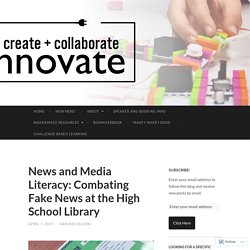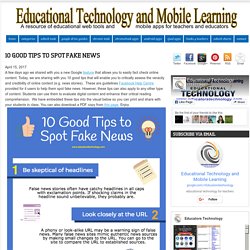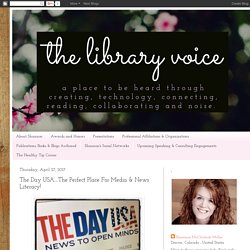

Ultimate Guide to Fake News: 27 of the Worst Fake News Sources. If you spent any manner of time on the Internet in 2016, you probably noticed the term “fake news” being thrown around.

It seems that the events of 2016 helped fuel an epidemic of the writing, posting, and sharing of articles posing as factual news releases. In reality, they were nothing more than clickbait attempts at generating revenue through the spreading of nearly unbelievable stories that captivated the emotions of many. It’s never fun when you read something awe-inspiring online and then find out later that you were tricked into believing something entirely untrue. It’s also embarrassing when you share the latest "breaking news" – showing your friends that you're one of the first people in the know – and then that news ends up being fake. Your reputation could take a hit, and in the future, people you connect with will tend not to believe your stories. So how do you combat this? Let’s start with the basics: what is Fake News? 1. 2. 3. 4. 5. 6. Sign into your Facebook account.
Ultimate Guide to Fake News: 27 of the Worst Fake News Sources. For April Fools Day in 1957, the BBC created a hoax in which they convinced the nation that spaghetti was grown from "spaghetti trees" in Italy and Switzerland. In 1957, the British Broadcasting Corporation broadcasted a three-minute report on a current affairs program Panorama, about a spaghetti tree in the south of Switzerland.

It was supposed to be their joke for April Fools’ Day and the audience was supposed to laugh, not to call the BBC and ask them how to grow their own spaghetti tree. In 1957, for the first of April, the BBC produced a report narrated by the BBC broadcaster Richard Dimbleby about a family in Ticino, Switzerland gathering their annual spaghetti harvest. News and Media Literacy: Combating Fake News at the High School Library. Teaching Digital Naivetés?

I think it was around December when I started compiling resources for a lesson in Fake News. I found a ton of great resources from SLJ, the New York Times, and even a professor with a huge list of ideas for analyzing fake or click bait-y news. However, I still needed a class to teach! Then about a month ago, one of my freshmen teachers said, “I don’t want to do the same old research, I want to get my students to think for themselves!” We worked together and outlined what she wanted her students to be able to do and we both discussed that we didn’t want to focus on politics. This might seem like a simple goal, but the murky news waters of the Internet have complicated our student’s ability to reason. This absolute trust in what they see on the Internet is what Peter Adams calls “digital naiveté moments, when a student trusts a source of information that is obviously unreliable.”
Here is the unit I developed with Ms. Media Literacy Unit. I taught my 5th-graders how to spot fake news. Now they won’t stop fact-checking me. It was a fall day in 2014, and my classroom was full of excitement.

My students had transformed themselves into historical figures for a living history project. I was going to broadcast it online so other schools could watch our “Age of Exploration News Conference” live. One half of the class researched and dressed up as European explorers like Christopher Columbus. 10 Good Tips To Spot Fake News. April 15, 2017 A few days ago we shared with you a new Google feature that allows you to easily fact check online content.

Today, we are sharing with you 10 good tips that will enable you to critically assess the veracity and credibility of online content (e.g. news stories). These are guidelines Facebook Help Centre provided for it users to help them spot fake news. However, these tips can also apply to any other type of content. Students can use them to evaluate digital content and enhance their critical reading comprehension. The Day USA....The Perfect Place For Media & News Literacy! With media literacy and fake news being such hot topics in education and the world, we need resources and teaching tools that will support our students in the library, classroom and home.

The Day USA is just what we need! And guess what? I am very excited to share that Follett has announced they are the exclusive distributor on The Day USA within the United States. Let me tell you a about The Day USA so you can see what an amazing resource this will be for your students and school community too!
The Day USA supplies high-interest articles in an online daily news service for schools. They write daily articles and features for every subject including news, government, economics, science, sports, geography, culture, ELA and more. The Features focus on big topics throughout the week including Briefing, Opinion and The Big Issue to name a few. The Day USA can be used as a platform for rich discussions and learning experiences. I can see so many ways to use...
You Decide, Weekly Quiz, Untitled.